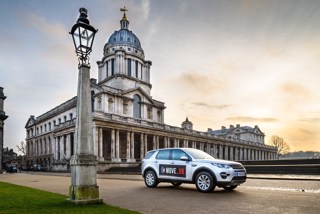Research from Move UK has opened the door to more rapid development of automated driving technologies, with much less data intensive methods now required to test driver assistance systems such as automatic emergency braking (AEB).
The consortium, led by Bosch, is now completing the final phase of its three-year research programme, designed to accelerate the development and deployment of automated driving systems using a new method of testing which they call Connected Validation.
Business minister Andrew Stephenson said: “Through our modern Industrial Strategy’s Future of Mobility Grand Challenge, we want the UK to be at the forefront of a new era of driving for the 21st century and beyond.
“This new research will build the UK’s world-leading automotive capabilities and prove essential in helping ensure that automated driving in the UK is as safe as possible.”
Arun Srinivasan, executive vice president and head of Mobility Solutions at Bosch UK, said: “As the Move UK project nears its conclusion, it’s important to recognise the progress we’ve made in developing automated and connected vehicle technology here in the UK.
“The real-world driving data collected is incredibly valuable, and is contributing to ground-breaking work across the consortium.
“As the project’s lead partner, we are delighted with the success of the new validation method, as we take a significant step towards achieving fully autonomous driving and our vision of accident-free and stress-free driving.”
Real-world trials of the consortium’s Connected Validation methodology, conducted in and around the Royal Borough of Greenwich, have found that 8,500 hours of driving can be distilled into just 450 short driving sequences where on-board systems detected a potential hazard.
Only 25 of these sequences were classed as “critical” braking situations which are highly relevant for the validation of the next generation of driver assistance systems.
Conventional approaches to validation typically involve engineers poring over thousands of hours of data captured predominantly from track testing, but the huge amounts of information generated by driverless systems make these more traditional methods impractical, it said.
The new technique used by Move UK limits the amount of information collected, by only recording data from the most relevant events; this significantly reduces the time it takes to process and analyse the data and bring a roadworthy system to market.
The Connected Validation approach could also be applied after launch of a new system to market, allowing system engineers, and potentially approval authorities and insurers, to monitor safety performance of production systems fitted to end users’ vehicles.
The Move UK research programme is not limited to simply developing automated driving technologies, it also allows consortium partners Direct Line Group and The Floow to build more accurate insurance models which will help towards providing future insurance products and pricing that is more closely linked to risk.
Dan Freedman, director of Motor Development at Direct Line Group, said: “Understanding the impact of Autonomous vehicles on insurance is vital for us as a business and for the customers we serve.
“The Connected Validation process will allow us to get a much quicker understanding on how Autonomous cars will interact with other cars, pedestrians and infrastructure and will play an important role when it comes to identifying the risks that will give consumers the confidence to embrace the technology.”
Dr Sam Chapman, chief innovation officer of The Floow, added: “Ask anyone about their first few months behind the wheel since passing their test and they’ll tell you how much they've learned.
“Real world experience counts for a lot and we’ve discovered that, not unexpectedly, humans do not drive to the letter of the law - people speed, cut each other up and make all manner of mistakes.
“Their interpretation of hazards and safety is markedly different than the Highway Code would have you expect. Autonomous vehicles will need to be programmed to accommodate this real-world behaviour. This will be a critical factor to consider when planning for autonomous mobility in the future and determining how risk is managed.”
A fleet of five sensor-equipped Land Rover Discovery Sport vehicles driven by Greenwich council and TRL employees were used to collect Move UK’s data. This fleet will have completed well over 100,000 miles on public roads by the time the project concludes at the end of next month.
The advanced sensors fitted to the vehicles give a full 360-degree view, ensuring these tests provide a much better understanding of the behaviour of surrounding vehicles which will be fundamental for the development of safe and ‘human-like’ level 3 and 4 automated driving features.
Richard Cuerden, academy director at TRL, said: “For decades TRL has been at the forefront of developing international vehicle safety standards.
“Move UK has generated original data and demonstrated new methodologies that will contribute to the evolution of today’s standards and Type Approval regulations for new vehicles, providing evidence to help ensure they remain robust, relevant and cost effective for vehicles fitted with advanced driver assistance and automated systems.
“Move UK has also developed analysis techniques, using big data collected by vehicle sensors and cameras, to assess the real world performance of these complex vehicle systems operating in silent mode.
“Understanding how advanced driver assistance and automated systems perform in the real world context is critical. Efficient validation and verification methodologies are key components to help get safer and approved vehicles on our roads as quickly as possible – ultimately preventing deaths and injuries.”























Login to comment
Comments
No comments have been made yet.